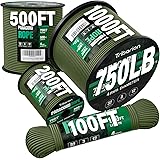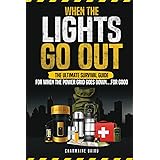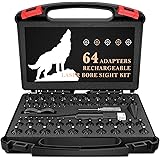Imagine a biting cold wilderness. Your primary fire source is unexpectedly soaked, or worse, completely out of fuel. Panic sets in swiftly. However, a humble lighter, often overlooked, holds immense hidden potential. This video above unveils critical survival lighter hacks, transforming a simple tool into a versatile bushcraft asset. These techniques are not mere tricks; they are essential skills for any serious prepper or outdoor enthusiast.
Mastering Survival Lighter Hacks: Essential Bushcraft Fire Starting Techniques
A standard butane lighter might seem basic. Yet, its utility extends far beyond casual use. With strategic modifications and clever applications, it becomes a crucial element in your emergency preparedness kit. These **bushcraft lighter techniques** conserve fuel. They also expand your fire-starting capabilities significantly. Each hack builds resilience. It ensures you maintain crucial fire-starting ability, even in dire situations.
The Versatile Wick: Fuel Conservation and Extended Reach
One of the simplest yet most effective modifications involves adding a waxed hemp or twine wick. This small addition yields remarkable benefits. It saves precious lighter fluid. Conversely, it creates a sustainable, candle-like flame. Imagine needing to light a recessed lantern. A conventional lighter might burn your fingers. However, a hemp wick extends your reach safely. This small fiber is also surprisingly resilient. Even after becoming submerged, a waxed hemp wick dries quickly. It will still catch a spark. It offers consistent flame. This is vital for wet environments.
Beyond its fire-starting role, this waxed twine offers practical utility. It can be wrapped around the lighter’s base. This creates a secure attachment loop. A lanyard or keyring can then be added. This simple addition prevents loss. Moreover, clever placement of the upper wraps prevents accidental fuel leakage. Often, the lighter’s igniter button gets depressed in storage. This wastes valuable fuel. A few strategic wraps of twine secure the button. This minor adjustment ensures your lighter remains primed for action. It’s a testament to improvised engineering in the field.
Duct Tape: The Multi-Functional Bushcraft Ally
Duct tape, often hailed for its “thousand and one uses,” proves invaluable here. A small roll wrapped around your lighter adds functionality. Like the waxed hemp, duct tape is surprisingly flammable. It ignites readily. It can even catch a flame after getting wet. This makes it an excellent supplementary tinder. Imagine your primary tinder is damp. A sliver of duct tape could be the key to starting your critical fire. It burns slowly. It provides sustained heat.
However, its utility extends further. An old soda can tab, often discarded, can be repurposed. Attach this tab to the lighter’s base. Secure it firmly with duct tape wraps. This creates another robust attachment point. Keys, cordage, or a small carabiner can then be added. This ensures your lighter is always accessible. It reduces the chance of misplacement. Combining the waxed hemp wick and duct tape maximizes a lighter’s potential. The tape secures the wick. The wick provides a slow-burning flame. This synergy is optimal for emergency fire starting. It embodies resourceful preparedness.
Repurposing a Dead Lighter: Ingenious Tinder Storage and Spark Mastery
Even a completely dead or empty lighter can be invaluable. It becomes a weather-sealed storage vessel. This ingenious hack focuses on optimal tinder. Cotton balls, when dipped in petroleum jelly (Vaseline), become superior fire-starting material. The cotton catches a spark easily. The Vaseline extends burn time dramatically. It also intensifies the flame. Imagine needing fire in a downpour. This weather-sealed tinder provides a significant advantage. It ensures a quick, robust ignition.
To implement this, one drills a small hole into the lighter’s base. The Vaseline-soaked cotton is then stuffed inside. Duct tape then seals the entire lighter. This creates a waterproof, compact tinder supply. When needed, simply pull out a piece of cotton. It will readily catch a spark. Even from an empty lighter’s wheel. The bare cotton ignites instantly. The Vaseline then fuels a prolonged burn. This technique leverages the lighter’s spark mechanism. It also transforms inert plastic into an active survival tool. Moreover, removing the lighter’s child guard makes the wheel easier to spin. This simple modification increases friction. It creates more consistent sparks. This is critical in stressful situations. Every bit of efficiency helps when fire is paramount.
Improvised Fire from a Broken Lighter: No Knife, No Problem
What if you lack a knife? What if you’ve done no prior preparations? A dead or broken lighter still offers salvation. First, find a sturdy rock. Use it to pry off the lighter’s metal guard. Bend this metal flat. Then, sharpen one edge against another rock. This improvised scraper becomes a valuable tool. It can scrape plastic from the lighter body. This plastic, while flammable, won’t ignite from a spark alone. This requires another critical step.
Slowly spin the lighter wheel upside down. This action creates a small mound. This mound consists of ferrocerium dust. Ferrocerium is the same alloy found in ferro rods. This dust is highly ignitable. It easily catches a spark. Once ignited, it burns fiercely. This small flame then ignites the scraped plastic. This gives you precious time. It allows you to add other tinder. This method works on various difficult tinder types. Birch bark, for example, often struggles with a direct spark. However, a pinch of ferro dust changes everything. It ensures instant ignition. Similarly, a cotton shirt can provide tinder. Use your improvised scraper. Pile up cotton fibers. This will also ignite effortlessly. This technique truly underscores adaptability. It turns scrap metal and plastic into life-saving resources.
Advanced Lighter Techniques: The Roll and Water Recovery
Another lesser-known hack is the “lighter roll.” This method involves creating a tight tinder bundle. Position this bundle precisely where the lighter’s spark emerges. Then, roll the wheel forward, away from your body. This action heats the tinder. Eventually, the spark catches. The bundle ignites. While effective, this technique has drawbacks. Your finger might briefly contact the flame. The lighter wheel could also break easily. In contrast, the ferrocerium dust method offers greater safety. It also provides more control. It remains the preferred method for many bushcrafters.
A submerged lighter presents a common challenge. Falling into water, or a capsized boat, can render it useless. However, recovery is often possible. Act quickly to dry it. First, tap the lighter upside down. This drains trapped water. Next, blow forcefully into the mechanism. Focus on getting air under the wheel. Tap it against your hand or clothing repeatedly. This dislodges residual moisture. Finally, slowly roll the wheel a few times. Only a few rolls are needed. This dries the ferrocerium underneath. Gradually, a spark will emerge. Soon, a consistent flame follows. This systematic approach restores functionality. It helps you quickly start a critical fire. Imagine you are wet and cold. Rapid fire access is not just convenient; it’s a necessity for preventing hypothermia.
In extreme situations, a second lighter can aid a wet one. The flame from a working lighter can help dry out the spark mechanism. This is a borderline practical hack. Yet, it might be your only option. Such scenarios underscore the importance of redundancy. Always carry multiple fire-starting methods. These **survival lighter hacks** ensure you are never without fire. They boost your self-reliance significantly. Mastering these skills improves your overall outdoor preparedness. It makes you a more capable and confident individual in any wilderness scenario.











